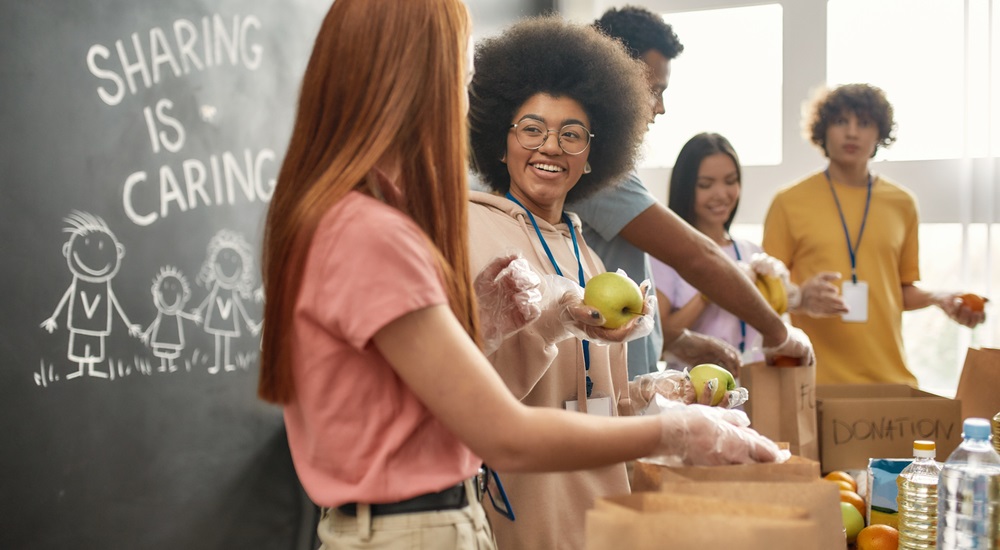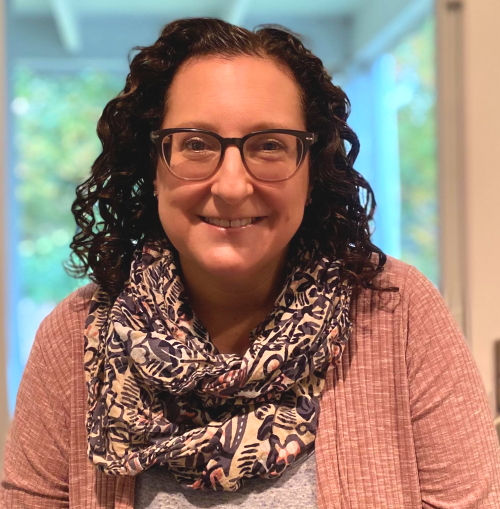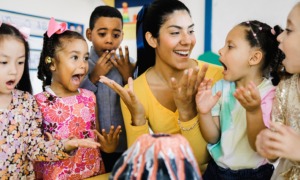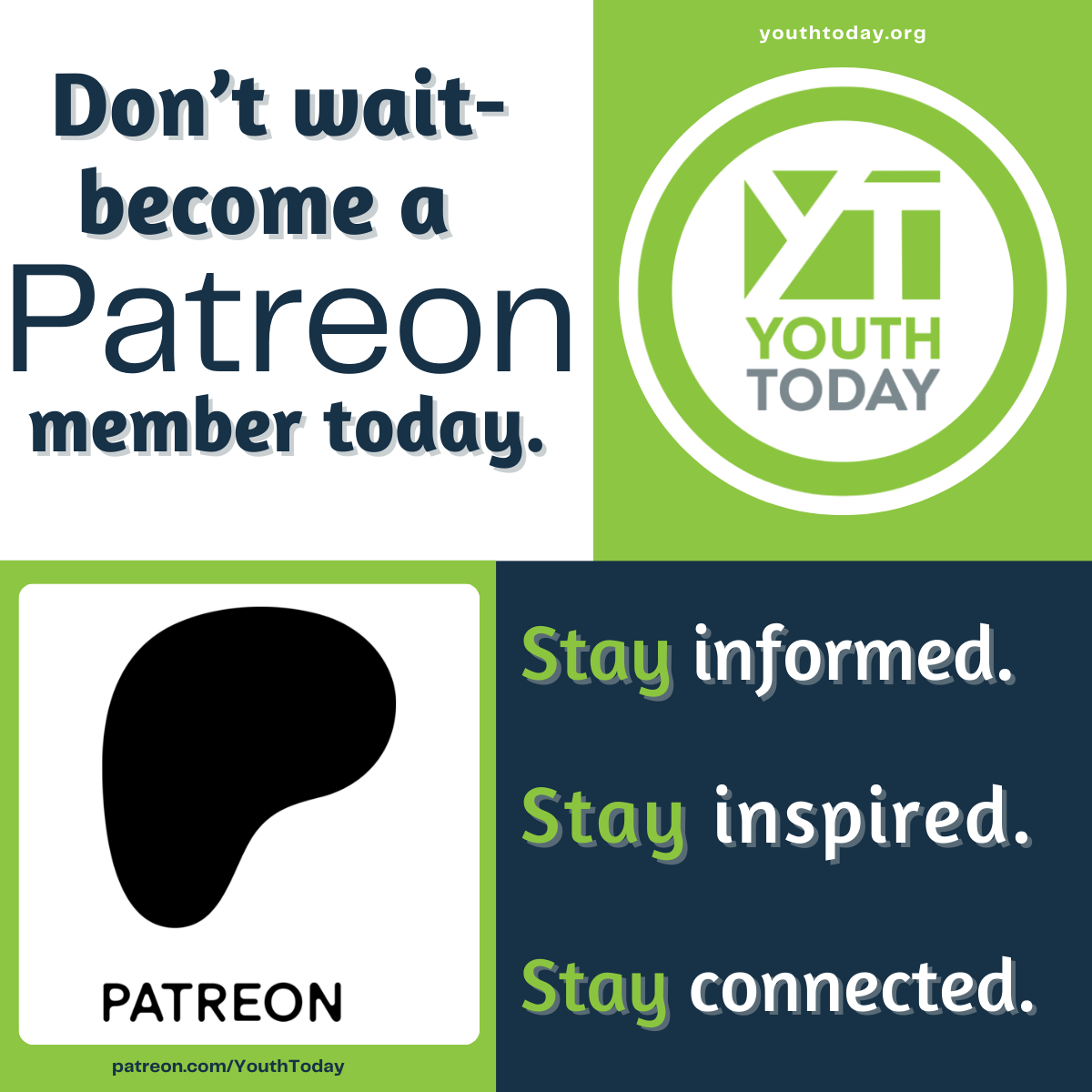 BAZA PRODUCTION/SHUTTERSTOCK
BAZA PRODUCTION/SHUTTERSTOCK
During distance learning youth can feel disconnected from their educators, their peers and the content of what they are learning. Service learning brings a sense of meaning and contribution to online learning that other instructional strategies may lack. It inspires youth to learn more about a subject and then put that knowledge to work by taking action on an issue within their community.
Educators across the country are using service learning to address problems in their community that have been exacerbated by the pandemic such as hunger, homelessness, mental health and education equity. In a recent survey conducted by the National Youth Leadership Council (NYLC), educators shared how they are using service learning during distance and hybrid learning to engage youth and build a sense of community and belonging.

Amy Meuers
In Mount Vernon, Indiana, youth wanted to take action on the impact of social isolation on the senior population in their hometown, so the middle school created cards for the holidays for local nursing homes while meeting their language arts learning goals. In Philadelphia, high school youth are using their computer science and coding skills to create apps that enable seniors to ask for help from local teens with a socially distanced task. In Springfield, Missouri youth are meeting their English language arts literacy learning goals by writing books for the local early childhood center.
“Students are engaged in their learning because it is relevant and because they know they are helping others,” says Study High School educator Beth Nickle.
Best practices

Shira Woolf Cohen
When educators lead youth through the process of service learning, whether online, in person or a hybrid of both, youth are engaged, connected and ready to learn. To ensure a quality service learning experience, NYLC has published a list of best practices for online service learning:
- Set norms for how you will work together. Be clear about expectations, communication and behaviors. Make sure these expectations are documented in a youth-friendly format and you review these expectations regularly with youth.
- Cultivate belonging. We know relationships matter so pay close attention to strategies that build relationships like one-on-one interactions, small group discussions and discussion boards.
- Focus on the process of service learning, not the platform. The pedagogy of service learning engages youth in the learning process, gives them a voice and builds their connection to each other and the community.
- Identify what learning outcomes you want for your youth (academic, civic, social-emotional, etc.) that directly connects to the mission of your program.
- Determine how you will know they have met learning outcomes. Ask yourself: What criteria will you use? What evidence will you collect? How will you assess learning at the end of the experience?
- Then, facilitate youth through the IPARD process:
- Investigation: Youth need to understand root causes of the issue they want to address. Understanding why the problem exists is an essential part of the problem-solving process. Much of the investigation can be done remotely. Youth can read articles, interview experts via phone, send out community surveys or scour the internet for information (learning to distinguish between fact and opinion).
- Planning & Preparation: Planning is fundamental to ensuring youth are ready to serve as a cohesive team. Technology is made for collaboration and teamwork. Youth create timelines, task lists, budgets and more. Using tools such as Google Sheet and Jamboard can help youth organize their thoughts and allow educators to hold youth accountable.
- Action: The service part of service learning does not have to be direct (in-person). Indirect service activities like raising funds or supplies are great ways to do service. Partnering with a local nonprofit that has safety protocols in place for receiving donations ensures youth safety. Advocating or educating others about your issue is another way to safely serve remotely. Youth can use tech tools such as social media, video hosting platforms and podcasts to get their message of advocacy out to the community.
- Reflection: Learning does not come from the act of service but in thinking about the experience itself. Whether personal, small group or the entire class, reflection reinforces youth learning outcomes. Reflection can be written, visual, auditory and more — most importantly giving youth diverse opportunities to reflect. Using Flipgrid to share video reflections, a discussion board to have youth respond to others or Google Slides to create a collage are some of the ways we can use technology to facilitate reflection throughout service learning.
- Demonstration: Sharing youths’ experiences is an important culmination of the service learning process. Technology allows youth to be creative in telling their story and allows them to share broadly. Whether youth create storyboards or podcasts, write a blog or newspaper article, or develop a play or music performance, or host a live town hall. Demonstration provides evidence of youth learning and effect on the community issue.
- Together, the youth and educator then assess the success of their experience. The team asks themselves: Did youth meet the learning outcomes? Did they address the community’s needs? What worked? What would you have done differently?
- Lastly, try different technology engagement strategies. Start with a few that you know and then don’t be afraid to experiment. Ask your youth if they have any platforms they prefer. Maybe even have one of the young people lead the experience. Check out NYLC’s growing list of technology tools that support online service learning.
Service learning can provide youth with an opportunity to feel empowered, to share their voice and to connect with others — something we can all use in these times of social isolation and distance learning. Whether through a classroom project, after-school or community-based programs, educators can lead youth through this process. With a perspective that online learning is not limiting, but limitless, we believe that youth can do anything in this virtual setting. It’s up to educators to provide the tools, structures and process so that youth can authentically make an impact within their community and the larger world.
Amy Meuers is the CEO of the National Youth Leadership Council and a champion for young people. Under her guidance, NYLC continues to be a recognized leader nationally and internationally for its work in youth engagement and service learning.
Shira Woolf Cohen is an educational leader and facilitator of professional learning. She is the co-founder of Innovageous and a Board member for the National Youth Leadership Council where she also co-facilitates the service learning instructional leadership certificate program.





























